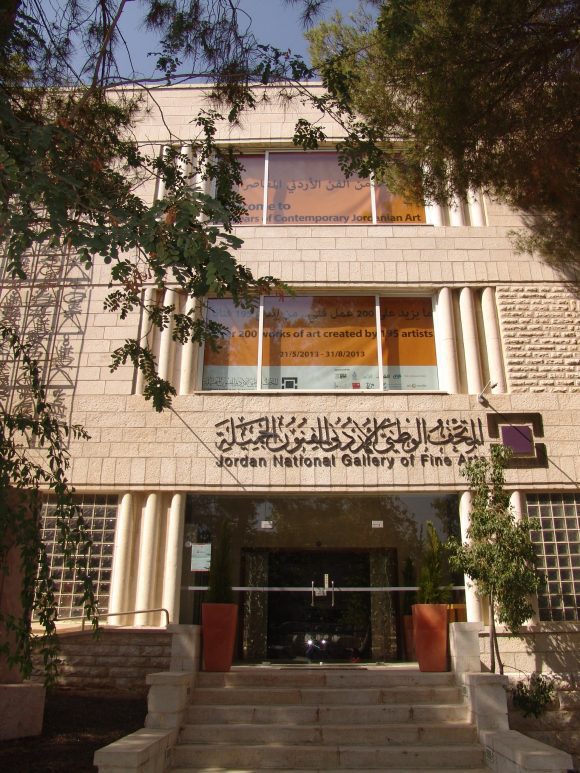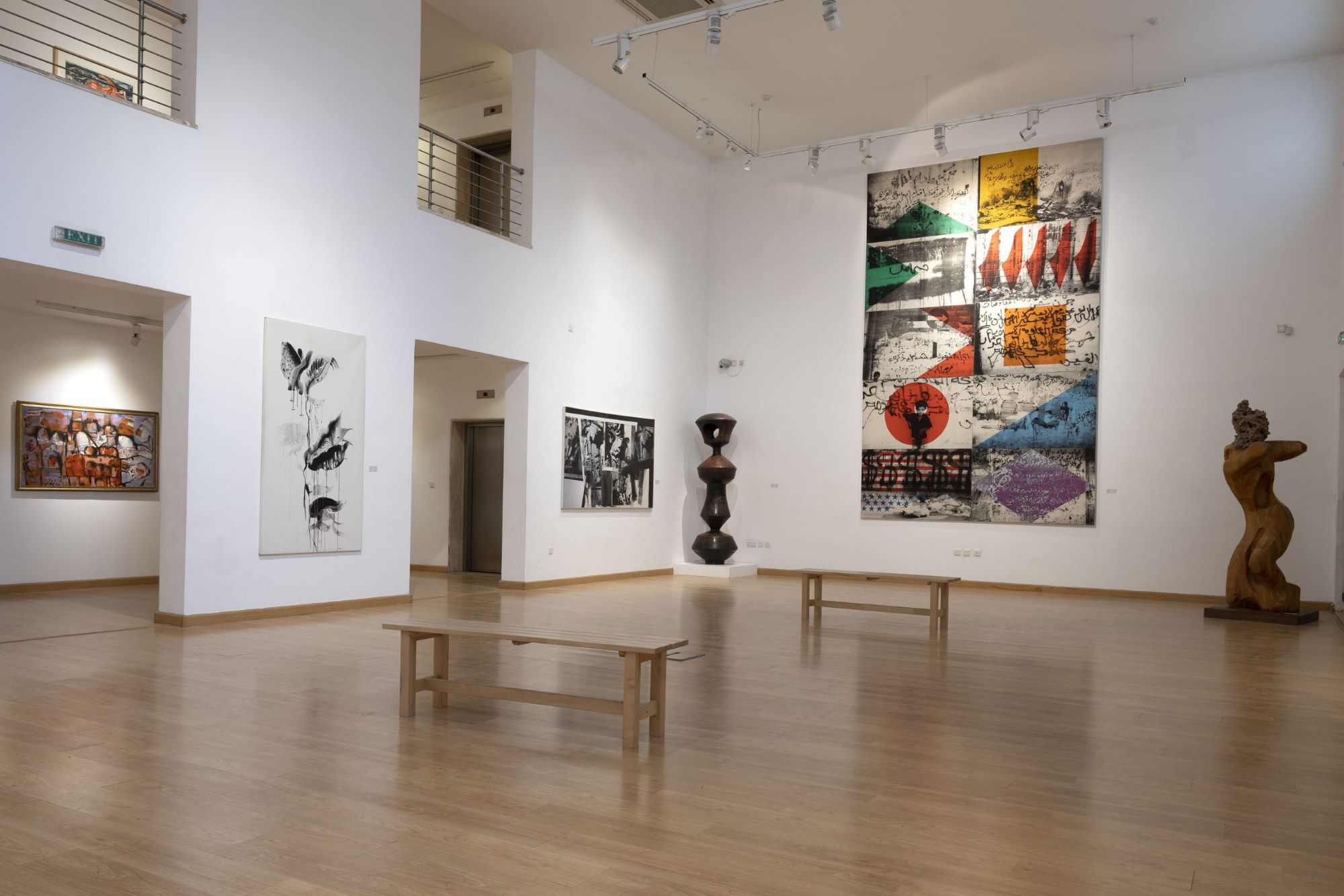 Jordan’s First Art Museum: JNGFA
Jordan’s First Art Museum: JNGFA


The history of the Jordan National Gallery of Fine Arts dates back to 1979 and the establishment of the Royal Society of Fine Arts. This private non-profit, non-governmental organisation, although with arguably close ties to the Hashemite family, aims to promote visual arts in Jordan, Arab and Islamic countries as well as in ‘the Third World’. The Society’s most visible and arguably also the most remarkable achievement has been the establishment of the Jordan National Gallery of Fine Arts (JNGFA) in 1980. The Gallery was the first art museum to open in Jordan, thereby occupying a rather important position as an organisation promoting modern and contemporary art in the country.
The JNGFA carries a particularly unique collection covering a very particular geography including the Arab world, West Asia and several Asian, Latin American and European countries. While in practice the museum’s collection is heavily focused on West Asia and North Africa, the fact that the collection includes works from such a variety of countries makes the institution unique in the global museum landscape. Regionally, there are other institutions with similar collections of modern and contemporary Arab art; think, for instance, the likes of Mathaf: Arab Museum of Modern Art in Doha and Barjeel Art Foundation in Sharjah, but the focus on ‘the Third World’, as defined by the institution, is something rather unique in the museum world.
The institution’s collections consisting of over 3000 artworks presents works in a variety of media including painting, drawing, sculpture, ceramics, installation, photography, weaving and video art. Temporally, the collection contains primarily works of the modern and contemporary periods. The museum also had a small collection of Orientalist paintings, comprising the likes of Eugene Delacroix and Jean-Léon Gérôme, but in 1993 the Society auctioned this collection, as it was felt that this collection did not fit the acquisition policy of the institution anymore.


Although officially the institution focuses on art from ‘the Third World’, in practice its collection and exhibitionary policies are heavily focused on Arab art history and art from different Islamic countries. The JNGFA has actively exhibited Jordanian and Arab artists abroad, but also brought international artists to Jordan. Importantly, the institution has organised several exhibitions scrutinising and contributing to modern and contemporary Arab art history. The first of such exhibitions was Contemporary Art from the Islamic World, organised in 1989 at the Barbican Centre in London. Unfortunately, the Western canon tends to forget this exhibition as the Pompidou’s Magiciens de la terre (1989) is usually presented as the first exhibition, where artists from non-Western backgrounds were exhibited as part of the global contemporary art production (as opposed to being exhibited in a more ethnographic manner). While not all the art historians agree on a notion of modern and contemporary ‘Islamic’ art, the JNGFA has been quite active in pushing such a discourse. At best, this has resulted in fruitful debates concerning the very ethos of art production from the region.
In 2005, the Royal Society of Fine Arts brought an old building across its park, opposite to the original museum building, and renovated it adding 1575 square metres to its original edifice. Nowadays, visitors can enjoy two exhibitionary spaces in Amman presenting the museum’s permanent collection and temporary shows. In 2009, the museum introduced the Mobile Museum, a van that has been converted into an art gallery. On Tuesdays, this van travels to Jordanian towns and villages exhibiting the works of Jordanian artists with an introductory lecture on Jordanian contemporary art.
Images courtesy of the Jordan National Gallery of Fine Arts.


 Jordan’s First Art Museum: JNGFA
Jordan’s First Art Museum: JNGFA 
